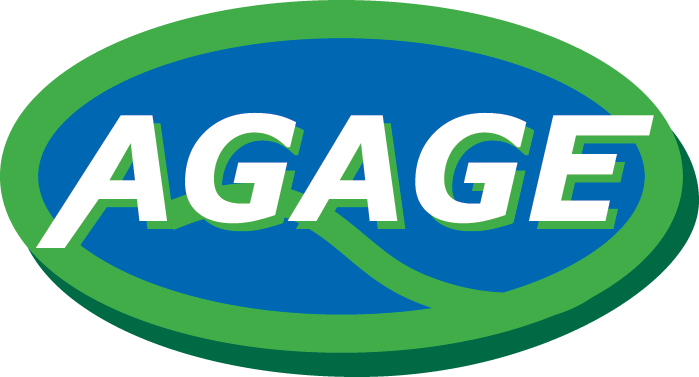The Advanced Global Atmospheric Gases Experiment (AGAGE) and its predecessors (the Atmospheric Life Experiment, ALE and the Global Atmospheric Gases Experiment, GAGE) have been measuring the composition of the global atmosphere continuously since 1978.
AGAGE is distinguished by its capability to measure at multiple sites over the globe all of the important halogenated gases regulated under the Montreal Protocol on Substances that Deplete the Ozone Layer, and the major non-CO2 greenhouse gases. AGAGE measures atmospheric abundances of chlorofluorocarbons (CFCs), hydrochlorofluorocarbons (HCFCs), hydrofluorocarbons (HFCs), hydrofluoroolefins (HFOs), perfluorinated compounds (PFCs), halons, chloro- and bromocarbons, major hydrocarbons (including methane), nitrous oxide and hydrogen. These substances have atmospheric abundances that range from parts-per-million (one in 106) down to parts-per-quadrillion (one in 1015), leveraging cutting-edge technology developed by AGAGE scientists to detect gases at these minute levels.
The original ALE/GAGE/AGAGE stations (Mace Head, Trinidad Head, Ragged Point, Cape Matalula, and Kennaook/Cape Grim) occupy remote coastal sites around the world to accurately track the “background” abundances of these gases after they are mixed into the atmosphere. Since then, stations in Europe (Jungfraujoch, Monte Cimone, Tacolneston, Taunus and Zeppelin) and in East Asia (Hateruma Island, Cape Ochi-ishi, Gosan, Dongtan and Xichong) have joined the AGAGE network to detect polluted continental signals.
The scientific objectives of AGAGE are to:
- Track the evolution of the abundances of these harmful ozone depleting substances and greenhouse gases in the lower atmosphere (troposphere) over multiple decades.
- Monitor the global distribution of these gases.
- Determine their rates of emission and/or chemical destruction (i.e., their lifetimes).
- Identify sources and emitting regions of these gases.
- Derive the concentrations of hydroxyl (OH) radicals through measurements of gases that react with the OH radical.


